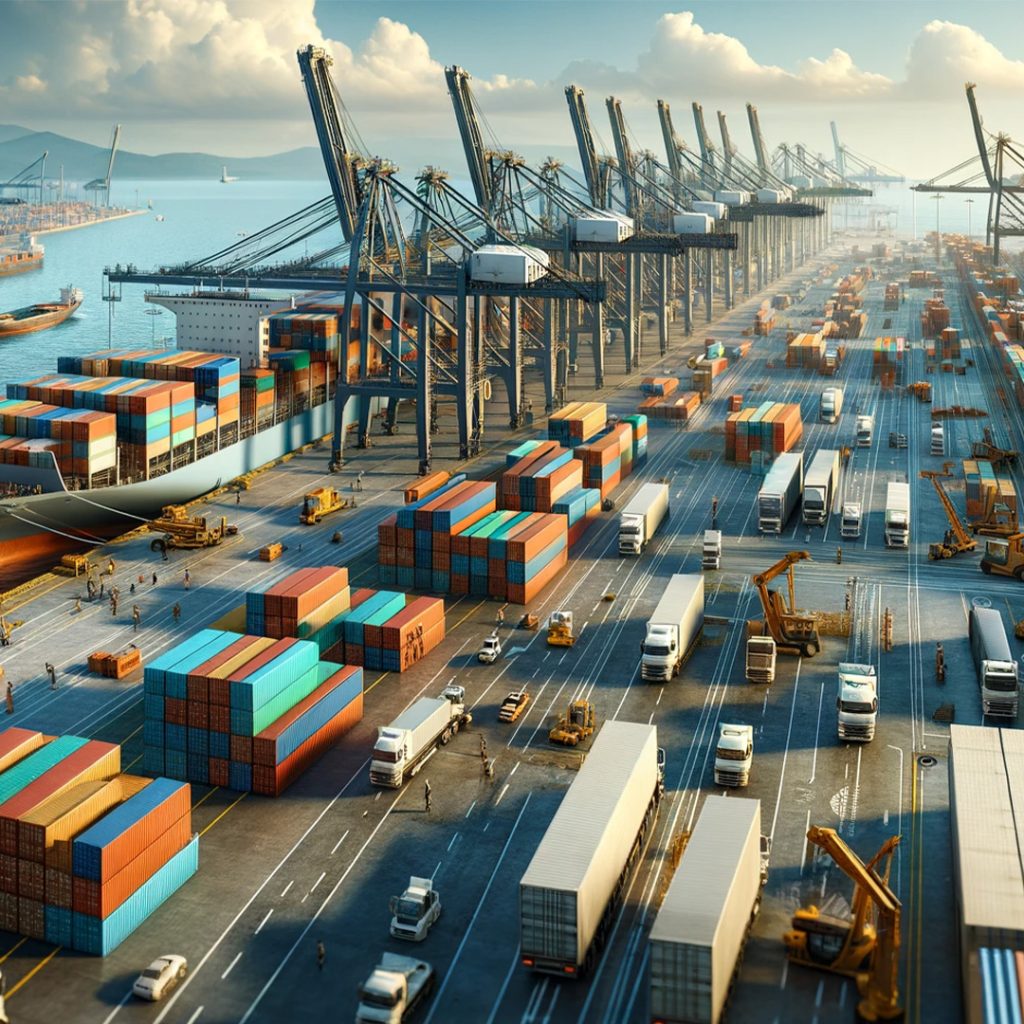How does multimodal shipping contribute to supply chain efficiency? In the fast-paced world of logistics and supply chain management, efficiency is key. This is where multimodal shipping comes into play, offering businesses a strategic approach to optimize transportation processes and streamline operations. Let’s delve into the process of multimodal shipping and explore its benefits, applications, and importance in today’s global marketplace.
What is Multimodal Shipping?

Multimodal shipping, also known as intermodal transportation, involves the movement of goods using multiple modes of transportation within a single journey. These modes typically include combinations of road, rail, air, and sea transport, seamlessly integrated to deliver goods from origin to destination. By leveraging the strengths of each mode, multimodal shipping offers flexibility, reliability, and cost-effectiveness, catering to diverse supply chain needs.
What is the role of multimodal logistics?

Multimodal logistics plays several key roles in the supply chain:
1. Optimizing Transportation Routes:
Multimodal logistics enables businesses to select the most efficient transportation routes by leveraging various modes of transport. This optimization helps minimize transit times, reduce costs, and improve overall supply chain efficiency.
2. Mitigating Risks:
By diversifying transportation modes, multimodal logistics helps mitigate risks associated with disruptions, such as weather events, traffic congestion, or infrastructure issues. If one mode encounters a delay or problem, alternative routes can be quickly implemented to maintain supply chain continuity.
3. Enhancing Flexibility:
Multimodal logistics offers flexibility in transportation planning, allowing businesses to adapt to changing market conditions, customer demands, and regulatory requirements. This flexibility enables companies to optimize their supply chain operations and respond swiftly to dynamic business environments.
4. Expanding Market Reach:
With access to multiple transportation networks, multimodal logistics enables businesses to expand their market reach and reach customers in diverse geographic regions. By seamlessly connecting air, sea, and land routes, companies can efficiently navigate international trade routes and tap into new market opportunities.
5. Improving Cost Efficiency:
By combining different modes of transport strategically, multimodal logistics helps businesses achieve cost savings and operational efficiencies. For example, utilizing rail for long-haul transportation and trucks for last-mile delivery can help reduce fuel costs and minimize environmental impact.
Overall, the role of multimodal logistics is to optimize supply chain transportation processes, enhance operational performance, and enable businesses to meet customer expectations for speed, reliability, and cost-effectiveness.
Applications of Multimodal Shipping:

1. E-commerce Fulfillment:
Multimodal shipping is instrumental in e-commerce fulfillment, where speed, reliability, and cost efficiency are paramount. By combining air, sea, and ground transportation, retailers can fulfill orders quickly and cost-effectively, meeting customer expectations for fast delivery.
2. Manufacturing Supply Chains:
Multimodal shipping plays a vital role in manufacturing supply chains, where the timely delivery of raw materials and components is crucial. By integrating multiple modes of transport, manufacturers can optimize supply chain flows, reduce inventory carrying costs, and improve production efficiency.
3. Retail Distribution:
In the retail sector, multimodal shipping enables efficient distribution of goods from distribution centers to stores or directly to consumers. By leveraging a combination of trucks, trains, and ships, retailers can optimize delivery routes, minimize transportation costs, and ensure on-time deliveries.
What are the types of multimodal transport?

There are several types of multimodal transport, each combining different modes of transportation to facilitate the movement of goods across various distances and geographical regions. Some common types of multimodal transport include:
1. Road-Rail Transport:
In this type of multimodal transport, goods are initially transported by road to a rail terminal, where they are then loaded onto trains for long-distance transportation. This combination allows for efficient movement over long distances while leveraging the flexibility of road transport for initial and final mile deliveries.
2. Road-Sea Transport:
Road-sea transport involves the transportation of goods by road to a port facility, where they are loaded onto ships for overseas shipping. This mode is commonly used for international trade, allowing goods to be transported efficiently between continents and across oceans.
3. Rail-Sea Transport:
Rail-sea transport combines the speed and efficiency of rail transport with the long-distance capabilities of sea transport. Goods are initially transported by rail to a port facility, where they are loaded onto ships for overseas shipping. This mode is particularly useful for transporting large volumes of goods over long distances.
4. Air-Sea Transport:
Air-sea transport involves the transportation of goods by air to a port facility, where they are loaded onto ships for further transportation. This mode is often used for urgent or time-sensitive shipments that require fast delivery, as air transport provides rapid transit times while sea transport offers cost-effective long-distance shipping.
5. Rail-Road-Sea Transport:
This type of multimodal transport combines rail, road, and sea transport to facilitate the movement of goods across multiple regions and continents. Goods are initially transported by rail to a port facility, then transferred to trucks for local delivery to the port, where they are finally loaded onto ships for overseas shipping.
These are just a few examples of the types of multimodal transport available, and businesses can choose the combination of modes that best suits their specific logistical needs, taking into account factors such as cost, speed, distance, and cargo volume.
Conclusion
In conclusion, multimodal shipping is a cornerstone of modern logistics, offering businesses a versatile and efficient approach to transportation. By harnessing the power of multiple modes, businesses can unlock new opportunities, optimize supply chain performance, and stay ahead in today’s competitive marketplace.
Experience the power of seamless logistics with Galaxy Freight. Let us optimize your supply chain with our expert multimodal shipping solutions. Contact us today to embark on a journey of efficiency, reliability, and sustainability in global trade.



